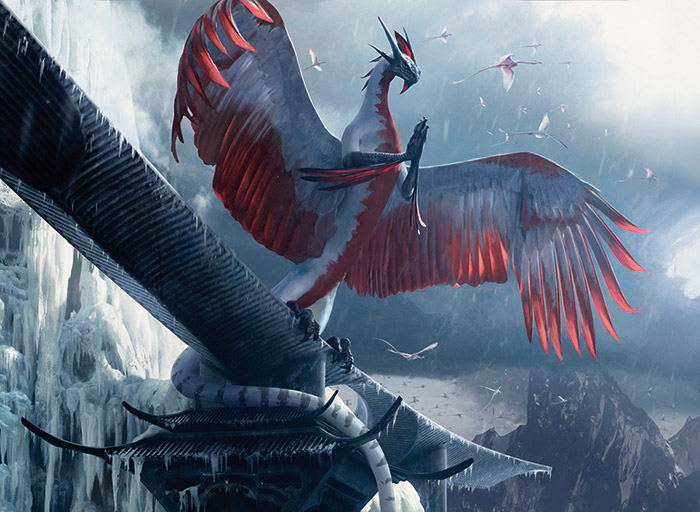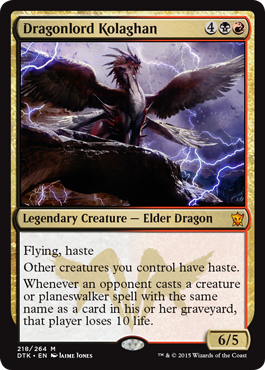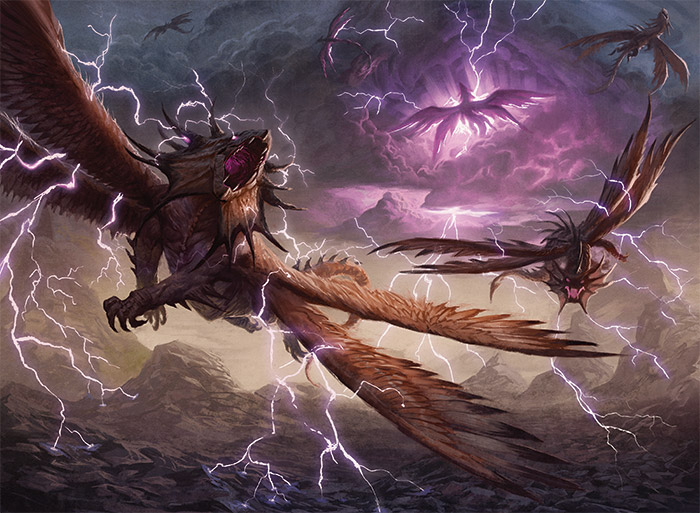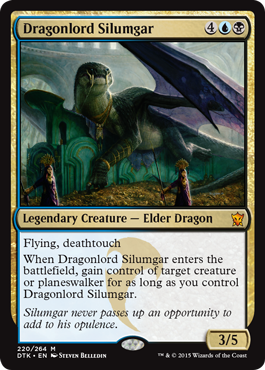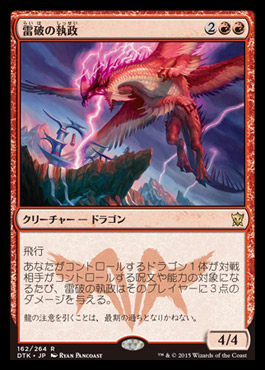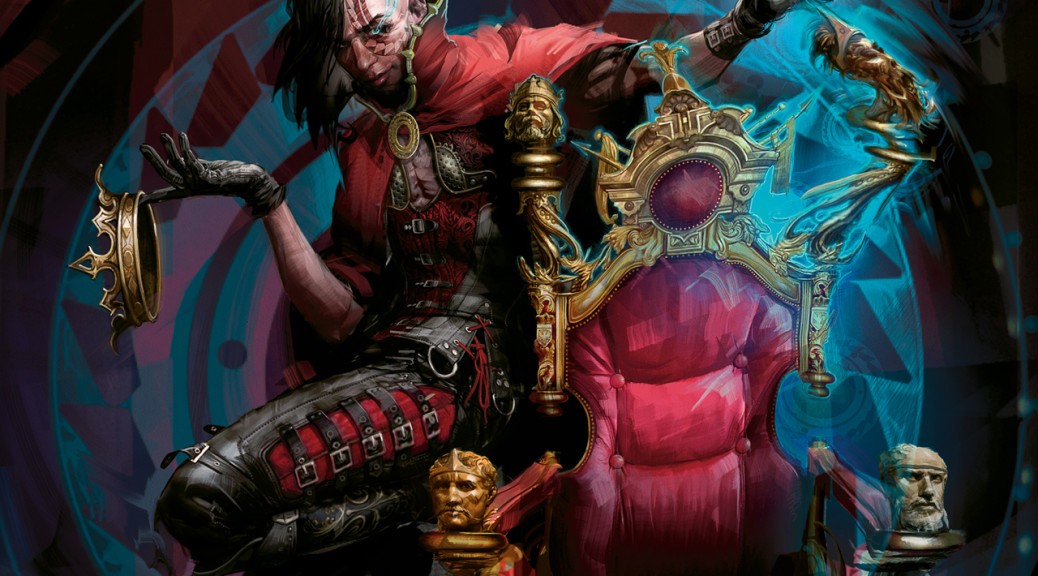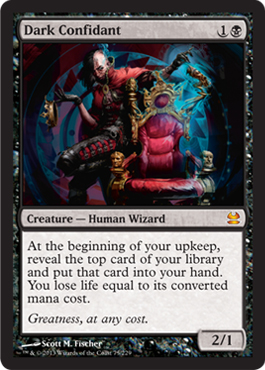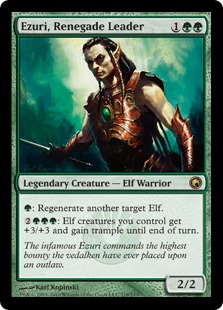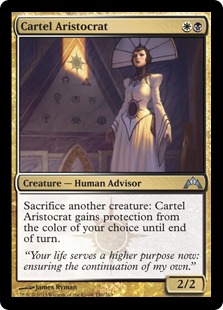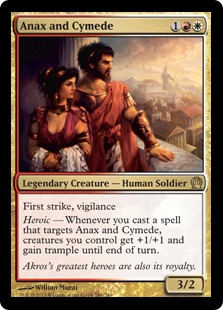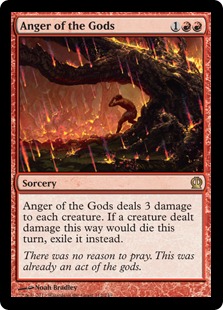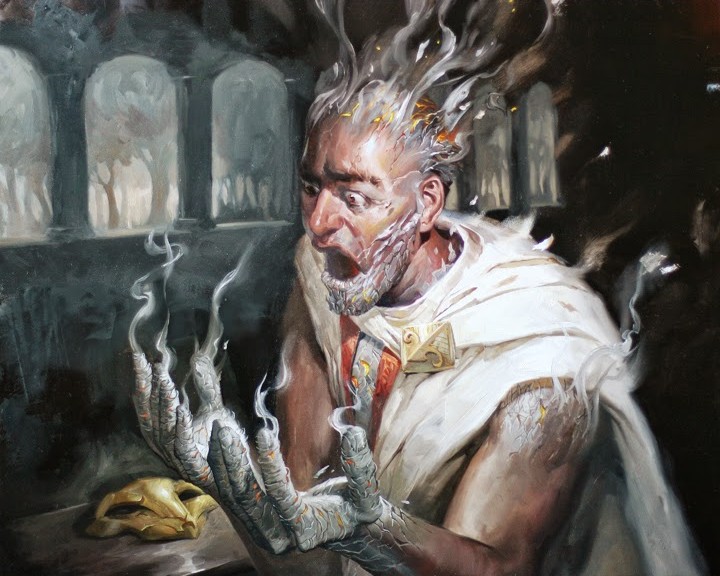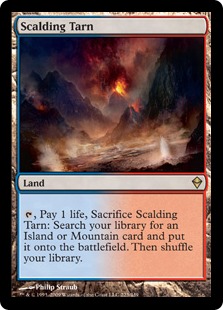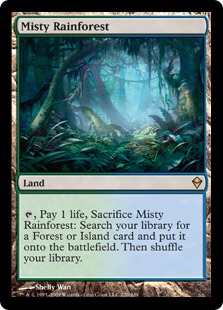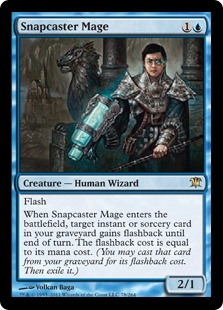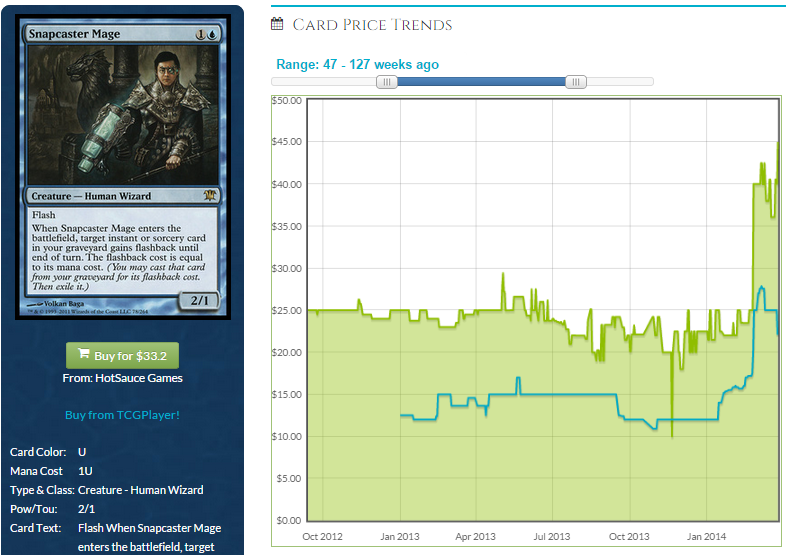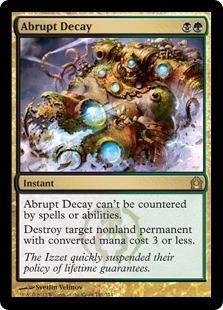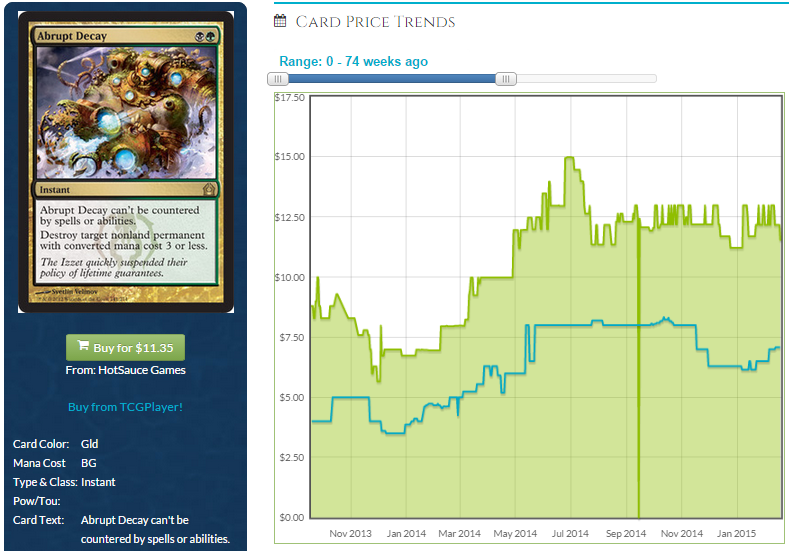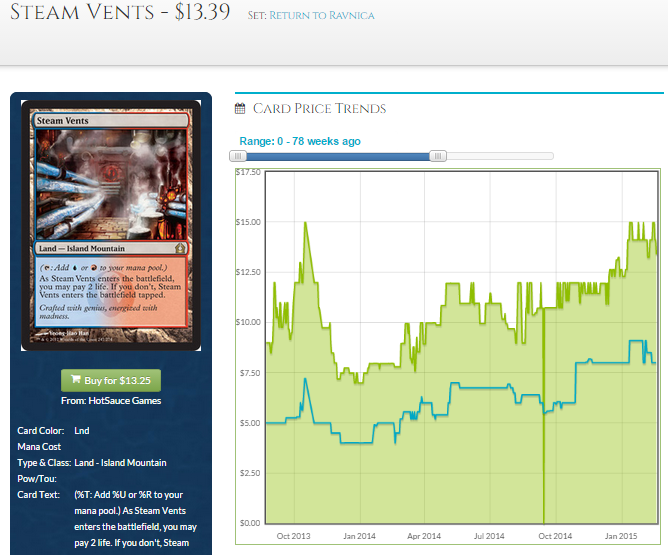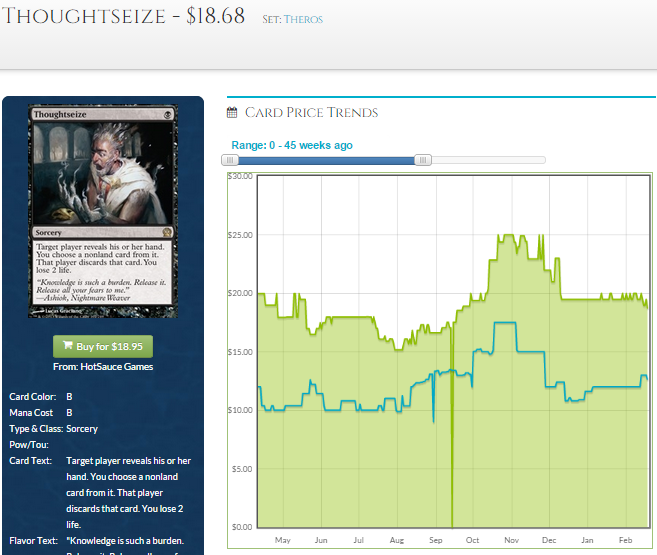By Guo Heng
Dragons. Elder Dragons. Dragonlords.
Dragons of Tarkir is a Timmy’s and Vorthos’ dream come true. The definitive dragon set, Dragons of Tarkir contains the highest number of dragons we have ever seen in a Magic set and by extension also the highest as-fan of dragons.
And as if that was not enough, we were spoiled with the return of the Elder Dragon subtype, one of the most iconic creature type in Magic. They were the progenitor of the Commander format, and they were integral characters in early Magic lore. Well, modern Magic lore as well, if you consider Nicol Bolas an Elder Dragon even after his planeswalker spark ignited.
The excitement surrounding the introduction of five new Elder Dragons was palpable. Elder Dragon was a rather rare creature type, appearing in only five cards throughout the twenty-two years of Magic’s existence. There are more Gods than there are Elder Dragons in the Magic universe.
Let’s take a look at the new Elder Dragons through our Magic finance monocles. Starting alphabetically we get have our largest of Dragonlords:
Atarka, Dragonlord Hodor
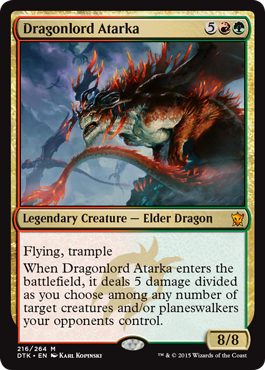
StarCityGames Presale: $9.99
ChannelFireball Presale: $6.99
TCG-Mid: $5.88
As you can see, I am not particularly fond of Dragonlord Atarka.
Standard: Dragonlord Atarka is the Magic dictionary’s definition of clunky. Yes, her enter the battlefield trigger will take down at least one creature in the current metagame of Siege Rhino, Tasigur, the Golden Fang, Polukranos, World Eater and Stormbreath Dragon. She may even take down a relatively fresh-on-the-board Elspeth, Sun’s Champion, or a ticked down Ugin, the Spirit Dragon.
However, if you are going to tap for seven, you would want more than just a two-for-one. Think Hornet Queen, who usually nets you at least a three-for-one, or at least turn the tides and stabilize your board. Dragonlord Atarka could stabilize your board by taking out a creature and being a 8/8 blocking body, but her board presence is less resilient than Hornet Queen.
Dragonlord Atarka is one mana cheaper than the iconic Bogardan Hellkite but her enter the battlefield trigger does not target players. Which is a shame, because you could not finish off opponents merely resolving a Dragonlord Atarka.
It waits to be seen if Dragonlord Atarka will see play side-by-side with Frontier Siege as Cedric Philips proposed in his article spoiling Dragonlord Atarka.
Modern: Don’t even think about it. You can’t even Dragonstorm Dragonlord Atarka for the win. Not that Dragonstorm is a deck in Modern anyway.
Commander: Her rare version was more interesting, as /r/EDH noted. I concur with them; I would rather have a seven mana commander that renders my dragons double strike (Thundermaw Hellkite for ten).
Plus, Dragonlord Atarka’s enter the battlefield trigger of five damage is nothing to fete about in Commander games.
Verdict: Dragonlord Atarka is what happens when you attach a pair of wings on Hodor. Or give him a can of Red Bull. Dragonlord Atarka’s price would drop from her preorder price, and experience a slow rise through the years buoyed by casual demand.
Predictions:
1 month: $5 – $6
Peak supply at the release of Magic Origins (3 months, 3 weeks): Under $5
Long-term: $5 – $10
Invest in foils if you are looking to make some long-term dough off Dragonlord Atarka.
Dromoka, Dragonlord-in-Chief
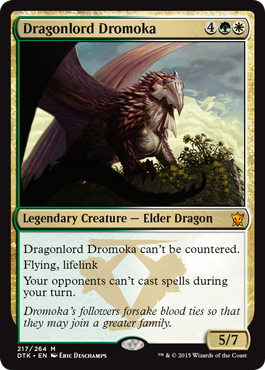
StarCityGames Presale: $7.99
ChannelFireball Presale: $6.99
TCG-Mid: $6.25
When a card was spoiled in the Mothership’s Command Tower column, it probably makes a good commander.
Standard: Dragonlord Dromoka may be the second most playable Dragonlord in Standard. An uncounterable 5/7 flying lifelinker for six mana is already playable as the top-of-the-curve for GW decks or even Abzan decks.
The Grand Abolisher clause is mere icing on the cake. I imagine the opponent can’t cast spells during your turn ability to be not too useful when you hit six mana most of the time except maybe that time where your control opponent has no answer to Dragonlord Dromoka for a few turns.
Her 5/7 flying body walls the majority of popular creatures in the metagame, and with lifelink, she could turn the tide when you are behind in board position.
True to her clan’s roots, Dragonlord Dromoka is the epitome of grindy. Imagine Siege Rhino and Dragonlord Dromoka in the same deck.
Modern: Dragonlord Dromoka has the makings to cut it in Modern, but her six casting cost makes her chance slim. A resolved Dromoka could block Tarmogoyfs, Tasigurs and Lingering Souls all day long and turn the tide of grindy midrange mirrors with her lifelink, but tapping six mana for a threat vulnerable to Path to Exile is setting yourself up for tempo loss.
If she does see play in Modern, she would probably be a one-off in the sideboard of midrange decks or Zoo variants.
Commander: Here’s where Dragonlord Dromoka truly shines. Dragonlord Dromoka excels both as a commander and one of the 99.
The two most popular GW commanders as of writing are Captain Sisay and Karametra, God of Harvests. Being legendary herself, I have a feeling Dragonlord Dromoka would be an auto-include in Captain Sisay decks as a tutorable hatebear hatedragon with upsides.
I do not play a lot of multiplayer Commander, so I can’t tell if Dragonlord Dromoka is better than Karametra as a multiplayer commander. To be fair, they both cater to different builds.
Besides ramping, Karametra decks could abuse the top of their decks with Karametra’s ability to trigger a shuffle. A Dragonlord Dromoka deck have me giddy at the thought of resolving an uncontested Genesis Wave or any of the GW hard lock combos available.
Verdict: I am excited about Dragonlord Dromoka both financially and as a player. She has cross-format potential and could be one of the Dragonlords to end up with double-digit figures in the medium to long-term.
Predictions:
1 month: $8 – $10, up to $15 if she sees significant play during Pro Tour Dragons of Tarkir.
Peak supply at the release of Magic Origins (3 months, 3 weeks): $10
Long-term: $15 – $20
I’m keeping an eye for foils of Dragonlord Dromoka when foils drop to slightly above $10. The current price of foil Narset, Enlightened Master, one of the most popular commanders from Khans of Tarkir which will be opened more than Dragons of Tarkir (and presumably redeemed more as well, because foil fetches) is $10 – $12 right now, and with Dragons of Tarkir opened less, I would imagine foil Dragonlord Dromoka to drop to a slightly higher price at peak supply.
Kolaghan, Dragonlord Disappointment
StarCityGames Presale: $3.99
ChannelFireball Presale: $3.99
TCG-Mid: $3.93
The cheapest of the Dragonlord in preorder price, Dragonlord Kolaghan was the most difficult to evaluate using theorycrafting. She could be decent, or totally crap.
At best, Dragonlord Kolaghan turns a few cards in your opponent’s hand into dead cards, that is until they draw into their Hero’s Downfall, Murderous Cut, Chained to the Rocks or Valorous Stance.
Without testing her out in real life, it is difficult to evaluate how triggerable her target opponent loses ten life clause is. Theorycrafting alone says that it would not be that often: it’s not often that control opponents resolve the same planeswalker twice, and the creature clause works best against creature-centric decks, but you don’t really want a six drop against those decks. Plus with the prevalence of Delve, you opponents could easily Delve away creatures in their graveyard to fuel a Murderous Cut.
Standard: RB is not a color combination that sees much play in the current Standard meta and unless an aggressive RB shell becomes a thing in Dragons of Tarkir Standard, I am pessimistic about the financial future of Dragonlord Kolaghan.
Plus, she gets picked out by fellow Dragonlord Atarka.
Modern: Nope.
Commander: Dragonlord Kolaghan seems to be designed with Commander in mind.
Verdict: I am tempted to put down Dragonlord Kolaghan as a bulk mythic. The only format she has any chance to make a break in is Standard and even if she does, she would unlikely be a four-of.
Predictions:
1 month: $2
Peak supply at the release of Magic Origins (3 months, 3 weeks): $2
Long-term: $5, on the merit of being an Elder Dragon.
I am not even sure if foil Dragonlord Kolaghan are good investments. Maybe if you can get them at bulk price, but she is an Elder Dragon and kitchen table demand may prevent her foil prices from descending to bulk.
Ojutai, Dragonlord Playable
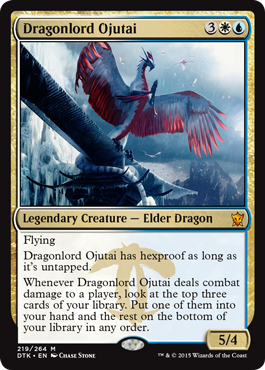
StarCityGames Presale: $5.99
ChannelFireball Presale: $5.99
TCG-Mid: $4.95
Dragonlord Ojutai has my vote as the most undervalued Dragonlord. True to his clan’s reverence of cunning, Dragonlord Ojutai is one of those cards that would probably turn to be much better than he looks once we get to play with him in our decks.
You can jam out Dragonlord Ojutai on turn five with impunity, knowing well he would survive to the next turn barring an End Hostilities or Crux of Fate. You can untap the turn after and have removals or protection up as you ride Dragonlord Ojutai to victory.
In the right build, I doubt it would be hard to connect once or twice with Dragonlord Ojutai to reap his value.
Standard: There are so many archetypes Dragonlord Ojutai could find a home in. He looks to be a good curve-topper for Jeskai burn where you could protect him with counterspells and clear the skies with burn to ride Ojutai’s value train.
Dragonlord Ojutai has synergy with Jeskai Ascendancy, and while the interaction looks cute, I am wary of discounting any Jeskai Ascendancy interactions as Jeskai Ascendancy has proven over and over again during Khans of Tarkir Standard that it is a powerful value engine that fits in a swath of Jeskai builds.
On a side note, you also get Vorthos points for the irony of running Dragonlord Ojutai in a Jeskai deck.
Dragonlord Ojutai could also find a perch as a finisher in UW or Esper Control decks. His mini-Brainstorm Ponder trigger digs you more gas, answers or Dig Through Time.
I do not know if Mono-Blue Devotion would be as viable as hyped once we enter Dragons of Tarkir Standard, but it would not be far-fetched to imagine Mono-Blue Devotion splashing white for Valorous Stance, Ephara, God of the Polis or Dragonlord Ojutai.
If needs be, Dragonlord Ojutai is able to trade with Siege Rhino and Tasigur, the Golden Fang. He is also the only Dragonlord immune to Dragonlord Silumgar’s charisma, which may be useful in control mirrors. Speaking of which, control mirrors may be a matchup where Dragonlord Ojutai excels as a pesky threat.
Unfortunately, Dragonlord Ojutai does not fare well against Stormbreath Dragon and if there is a factor that represses the playability of Dragonlord Ojutai, it would be the pervasiveness of Strombreath Dragon.
If that happens, I wouldn’t fret. Remember when Thundermaw Hellkite was cheap because he was unplayable in a Vapor Snag and Snapcaster Mage Standard?
Modern: Dragonlord Ojutai’s five casting cost puts him at the fringe of Modern playability. UW is not really a thing in Modern and I imagine Jeskai builds would rather run Keranos, God of Storms, or just plain Stormbreath Dragon over Dragonlord Ojutai.
Commander: Dragonlord Ojutai has the potential to be a control or stax commander, being relatively cheap and having in-built protection which plays well with the veritable selection of enchantments and artifacts that grants vigilance.
It would also be easier to trigger Dragonlord Ojutai’s ability in a multiplayer game.
Verdict: I think Dragonlord Ojutai is tied with Dragonlord Silumgar as the most playable Dragonlord. He is chock-full of potential in Standard and is Commander-playable.
Predictions:
1 month: $10 – $15
Peak supply at the release of Magic Origins (3 months, 3 weeks): $10 – $15
Long-term: It depends on how popular Dragonlord Ojutai is as a commander and if anyone breaks him in Modern (what are the odds? Low in my opinion).
Dragonlord Ojutai is one of the few cards I am preordering. It baffles me that he is preordering for less than Dragonlord Atarka.
Silumgar, Dragonlord Charisma
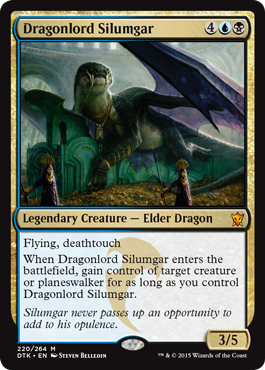
StarCityGames Presale: $7.99
ChannelFireball Presale: $6.99
TCG-Mid: $5.12
Reid Duke ran a good piece analysing Dragonlord Silumgar last week (his verdict: 7/10). I wrote extensively about Dragonlord Silumgar in my previous article (mainly praises). Without rehashing too much from both articles, Dragonlord Silumgar is easily the best of the Dragonlords.
Standard: UB and Sultai Control are obvious homes for Dragonlord Silumgar. Whether he belongs in the sideboard or mainboard is more contentious. I am of opinion Dragonlord Silumgar is good enough to see mainboard play.
Dragonlord Silumgar stabilizes the board with his Charisma trigger and five toughness which allows him to wall Siege Rhinos, Tasigurs and Stormbreath Dragon all day long. Not that they usually come back for a second encounter seeing that Dragonlord Silumgar has deathtouch.
Due to his very convenient three power, Dragonlord Silumgar is the only Dragonlord who does not die to Elspeth, Sun’s Champion.
Dragonlord Silumgar excels in control match ups as well, being an answer to opposing planes walkers that would steal the game if your opponent does not have an answer to Dragonlord Silumgar in return. Or conveniently ultimating your opponent’s planeswalker, but I imagine players would be playing around that possibility shall he becomes a mainstay of the Standard meta.
Modern: Sower of Temptation barely sees play in Modern and Sower only costs four. I doubt Dragonlord Silumgar would cut it in the current Modern meta where Path to Exile is so pervasive.
Perhaps if the meta shifts towards less Path of Exile, Dragonlord Silumgar may have a chance, but I highly doubt it. Six mana is prohibitive unless it’s a Primeval Titan.
Commander: In my previous article, I mentioned that Dragonlord Silumgar seems to be designed with Standard rather than Commander in mind, but better Commander minds think Dragonlord Silumgar may have a spot as one of the 99. I can’t argue with that.
Come to think of it, stealing big creatures or opposing Jace, the Mind Sculptor, would be quite fun in Commander. Dragonlord Silumgar is just not cut as a Commander himself.
Verdict: Dragonlord Silumgar, alongside with Dragonlord Ojutai would probably be the two Elder Dragons that see the most play in Standard. 7/10 in Reid Duke’s assessment is a pretty good, and I would venture to say Dragonlord Silumgar looks to be pushed in design.
Prediction:
1 month: $10 – $12
Peak supply at the release of Magic Origins (3 months, 3 weeks): $10 – $12
Long-term: Dragonlord Silumgar will probably maintain a mid $10s price tag through the majority of his Standard life.
Dragonlord Silumgar is a fine preorder if you want to play with him. While I think Dragonlord Silumgar has potential in Standard, I doubt he would be a four-of like Whisperwood Elemental, which is currently $14.
Also, a Dragonlord who wears the highly playable Tasigur as a necklace can’t be bad right?
All Hail the Dragonlords
Regardless of how much play they see in Standard, the Dragonlords will be casual hits. Kitchen table demand may actually be a strong driver for the price of the Dragonlords due to their immense casual appeal.
Casual demand is the invisible hand (I am totally misusing Adam Smith’s term) that drove up the price of angels and dragons and I would imagine the Elder Dragons to be the primary chase cards among the kitchen table crowd.
The kitchen table is where Dragonlord Atarka and Dragonlord Kolaghan have the best chance of being a hit. Dragonlord Atarka is the embodiment of the ultimate Timmy dragon. Kitchen table players are more likely than spikes to attempt abusing Dragonlord Kolaghan’s very situational ten damage clause.
It baffles me as to why Dragonlord Ojutai is one of the cheapest Dragonlord to preorder. Perhaps his prowess on the board would be better than what he looks like on the computer screen.
If the price trajectory of the foil Avacyn Restored angels – Avacyn, Gisela, Sigarda and Bruna – are anything to go by, Dragonlord foils would make for good long-term investments due to their immense casual and Commander appeal.
Of course, the month or two after release is not the best time to amass your foil Elder Dragons. Wait for Dragons of Tarkir to hit peak supply when Magic Origins is release when Dragons of Tarkir would have been drafted for nearly four months and redemption is in full swing.
In my previous article I mentioned that Dragons of Tarkir – Fate Reforged would ‘grind to a halt when Modern Masters 2015 is released’. I may be wrong about that.
While Wizards is ramping up the print run for Modern Masters 2015, the price of one Modern Masters 2015 pack would be three times the price of a Dragons of Tarkir booster pack. I don’t imagine the casual crowd to switch over to just drafting Modern Masters 2015 for the month between the release of Modern Masters 2015 and Magic Origins.
I suspect the supply of Dragons of Tarkir card would still trickle into the market after the release of Modern Masters 2015 and would only grind to a halt except for redemption once Magic Origin comes out.
Comments are more than welcomed, drop one below or catch me on Twitter at @theguoheng. Till then, may the Dragonlords be with you.
Edit: An earlier version of this article cited that Dragonlord Silumgar does not die to Valorous Stance, which is not true. A reader pointed out that Valorous stance actually checks the creature’s toughness, not power.
My bad. Running foreign language copies of Valorous Stance in my deck, I’ve always read it as “Destroy target Siege Rhino or Tasigur, the Golden Fang”.
